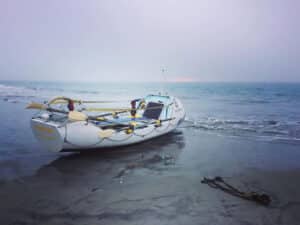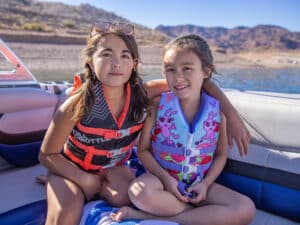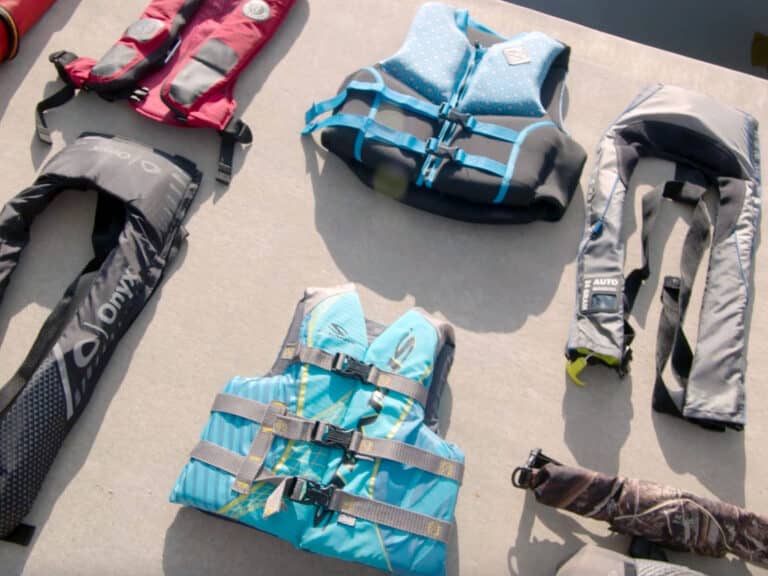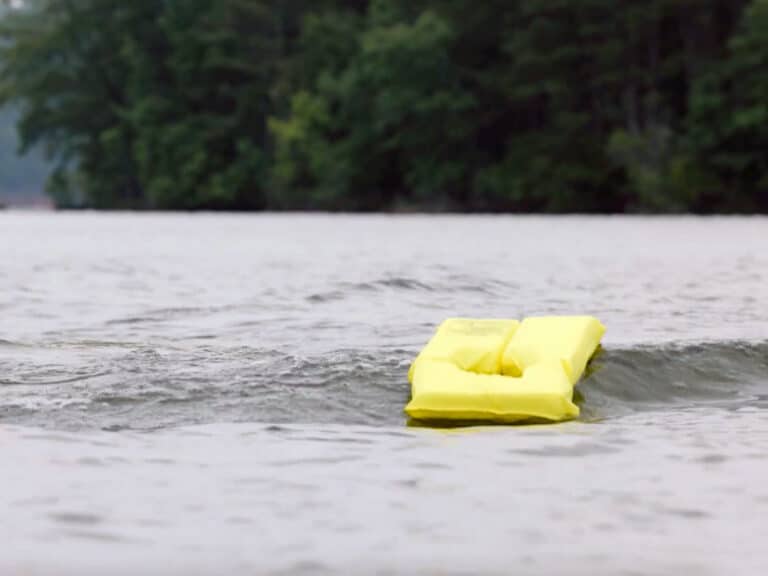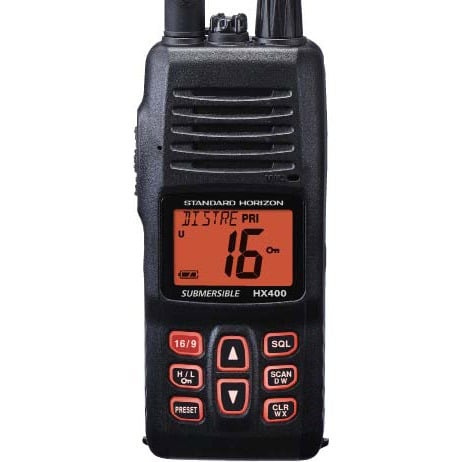
The handheld VHF radio may seem outmoded in an age of ubiquitous cell phones, but the capabilities and safety features of VHF stand apart. Unlimited by shorebound transmitters, VHF provides an enlarged safety net and allows immediate communication with other nearby vessels. You don’t have to know their phone numbers to call for assistance, and the Coast Guard is a button push away. That’s a pretty solid case for the VHF, but roll in some of the added features that manufacturers pack into these little radios, and the benefit to anglers becomes apparent.
Safety Link
Standard Horizon’s Jason Kennedy says the company’s HX400 ($199) is a useful VHF for anglers. “This radio has a built-in voice scrambler — it sounds like Charlie Brown’s schoolteacher talking,” he says. Other anglers will have to have a similar radio to unscramble the message, but your message and information will definitely remain private. Just like fishermen like it. It also has a boost in battery reserve. The improved lithium-ion battery has double the life of a standard conventional battery.
Add DSC
Navico ’s flagship handheld, available as the Lowrance LHR80 ($199) or the Simrad HH33 ($249), incorporates GPS to allow it to work in Digital Selective Calling mode. DSC allows for semiprivate hailing and communication, and also position polling and sharing, says Navico product expert Jeremiah Clark. DSC is a handy feature, but it requires acquiring an MMSI number — essentially a phone number — for the VHF radios you want to communicate with. The integrated GPS also serves as a backup, says Clark. With the radio in the charging cradle, the NMEA 0183 output on the cradle allows lat/long information to output to a chart plotter or any other instrument that accepts NMEA 0183 data.
Cell Link
Cobra put a couple of distinctive features in the MRHH 475 ($179), says marketing manager Christopher Kooistra, and both are particularly useful on open boats. The Say Again feature allows the last 20 seconds of a transmission to be replayed. The other feature is the Bluetooth link that patches your cell phone through the VHF.
“You pair the cell phone with the Bluetooth headset,” says Kooistra, “and when you get a call, the radio rings. You press Bluetooth and take the call over the VHF. This allows the cell phone to remain tucked away where it’s safe and dry.” Additionally, says Kooistra, “The noise-canceling function of the VHF reduces the problem of wind noise, and the quality of the call far surpasses anything the cell phone is capable of.”
To call out, you can dial from the cell phone and transfer the call to Bluetooth; you can remotely dial the last call received; or, with a cell phone that allows voice dialing, you can initiate a call by speaking a name through the Bluetooth.
Room to Move
Icom is targeting the small-boat market with its newest radio, the IC-M24 ($179), the smallest floating handheld on the market, says David McLain, national sales manager. It features a flasher that automatically deploys if the unit falls in the water, making it a great emergency tool as well. Even when the radio is off, if there is any juice in the battery, the
LED flasher kicks on in the water to help you find it in the dark.
The IC-M24 has a newly designed single-cell battery with enough capacity for 10 hours of standby power. And since a strong reserve and high capacity are prerequisites for coupling GPS to VHF, Icom is well positioned to continue improving the features and functionality in its handheld VHFs.
Get with DSC
Digital Selective Calling relies on a radio-specific “telephone number” called a Marine Mobile Service Identity. It’s free online from BoatUS (boatus.com) or Sea Tow (seatow.com). Armed with an MMSI number, your unit will broadcast your identity and location, along with any SOS that’s sent, when the distress button is activated.
You can also share your position on a chart plotter with friends with whom you have swapped MMSI numbers, allowing tracking — called position polling — and spoken communication in relative secrecy via the same DSC function.
* * * * *
The U.S. Coast Guard is asking all boat owners and operators to help reduce fatalities, injuries, property damage, and associated healthcare costs related to recreational boating accidents by taking personal responsibility for their own safety and the safety of their passengers. Essential steps include: wearing a life jacket at all times and requiring passengers to do the same; never boating under the influence (BUI); successfully completing a boating safety course; and getting a Vessel Safety Check (VSC) annually from local U.S. Coast Guard Auxiliary, United States Power Squadrons(r), or your state boating agency’s Vessel Examiners. The U.S. Coast Guard reminds all boaters to “Boat Responsibly!” For more tips on boating safety, visit www.uscgboating.org.



